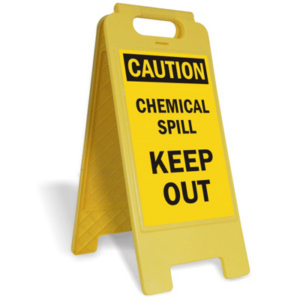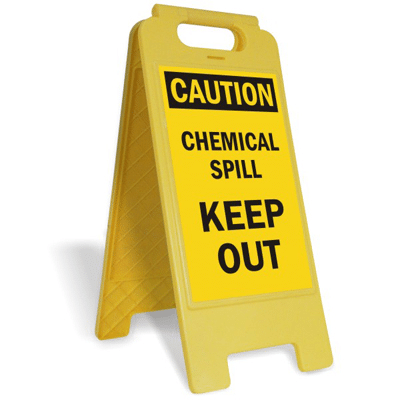 According to the Center for Disease Control, unplanned chemical releases kill about 40 Americans every year, and injure around 6,500. A chemical spill may release toxic or otherwise hazardous materials into the environment, endangering both your workforce and the general public.
According to the Center for Disease Control, unplanned chemical releases kill about 40 Americans every year, and injure around 6,500. A chemical spill may release toxic or otherwise hazardous materials into the environment, endangering both your workforce and the general public.
Ideally, chemical spills should be avoided at all times. If you keep your workforce well-trained and well-equipped, you can greatly reduce your chance of experiencing a chemical spill. Unfortunately, the world is not a perfect place, and even the most conscientious workers can sometimes make a mistake. Here are a few tips for how to minimize damage in the event of an accidental release.
1. Know Your Chemicals
Your workers should always know what chemicals they’re working with, particularly if they’re working with hazardous chemicals. This is even more important in the event of a chemical spill, since workers and first responders will need to quickly identify what’s been spilled.
Does the spilled chemical give off any toxic fumes? Is the substance flammable? Is it corrosive to metals? Will it react violently to any particular material? These are all things the people at the scene will need to know straight away.
It might not be immediately obvious who has been exposed to the chemical, so workers and responders need to know common signs of exposure for any chemical that is involved in a spill. Once they’ve found who’s been poisoned, they’ll probably want to help them out, so it’s also important that your employees know what first aid procedures should be done.
Incidentally, all of this information can be found on a GHS-compliant safety data sheet. You might help save somebody’s life by including this information in your HazCom program, so be sure not to cut corners.
2. Have a Plan
As soon as a spill is detected, your facility should initiate a contingency plan appropriate for the situation. The exact procedure will vary based on what chemical is spilled, and how much was released, but the basic protocol should be universal.
First, you should begin to direct all personnel away from the spill. This should take priority over everything else, since the last thing you want is more people being exposed. Begin an orderly and calm evacuation of the facility, with temporary signage placed to direct people away from the spill.
Next, you should activate your ventilation system. This will minimize exposure to potentially toxic fumes and will also reduce the chances of an explosion. If your workplace handles chemicals that are capable of generating hazardous fumes, a decent ventilation system is a necessity.
Now it’s time to prevent the spill from spreading. This is best accomplished with a dedicated spill kit, but any absorbent non-reactive material will do in an emergency. If at all possible, prevent the chemical from reaching any drains or waterways.
Finally, you have to actually pick up the spilled material. This is best done by closely following the instructions found on the chemical’s SDS. Make sure any person assigned to cleanup is wearing sufficient personal protective equipment.
3. Notify the Authorities
You need to call the nearest hospital as soon as the chemical spill is detected. You want trained medical professionals to be on the scene as soon as possible to help anyone who might’ve been exposed to dangerous chemicals.
The law also requires that you file a report with several regulatory agencies as soon as you can. If any employees were exposed, you might be required to report it to OSHA. The EPA also requires that you report larger spills of certain chemicals.
4. Develop a Remedial Plan
Preventing chemical spills from happening in the first place should be among your top safety priorities. As I mentioned earlier, this can be done by ensuring that your personnel are trained in proper use, transport, and storage procedures as well as regular equipment inspections.
When your safety program fails to prevent a spill, you need to make sure it won’t fail in the same way again. Identify the root cause of the spill, and make changes to your procedures or equipment to correct any flaws your analysis finds.
Hopefully your workplace will never be in need of this advice, but it’s certainly better to know what to do if an emergency does occur.







